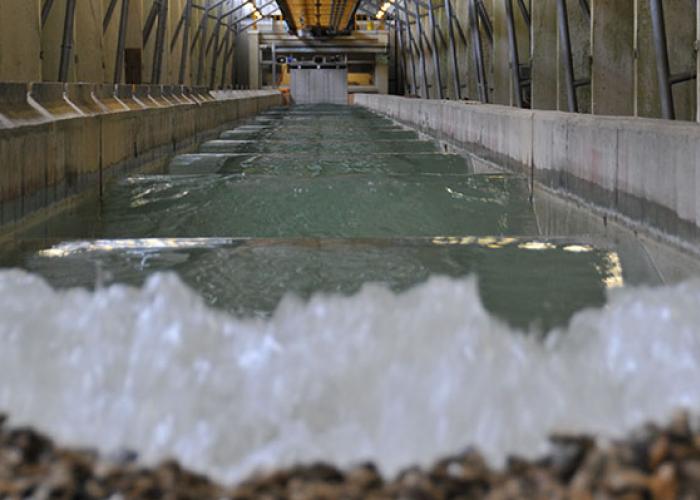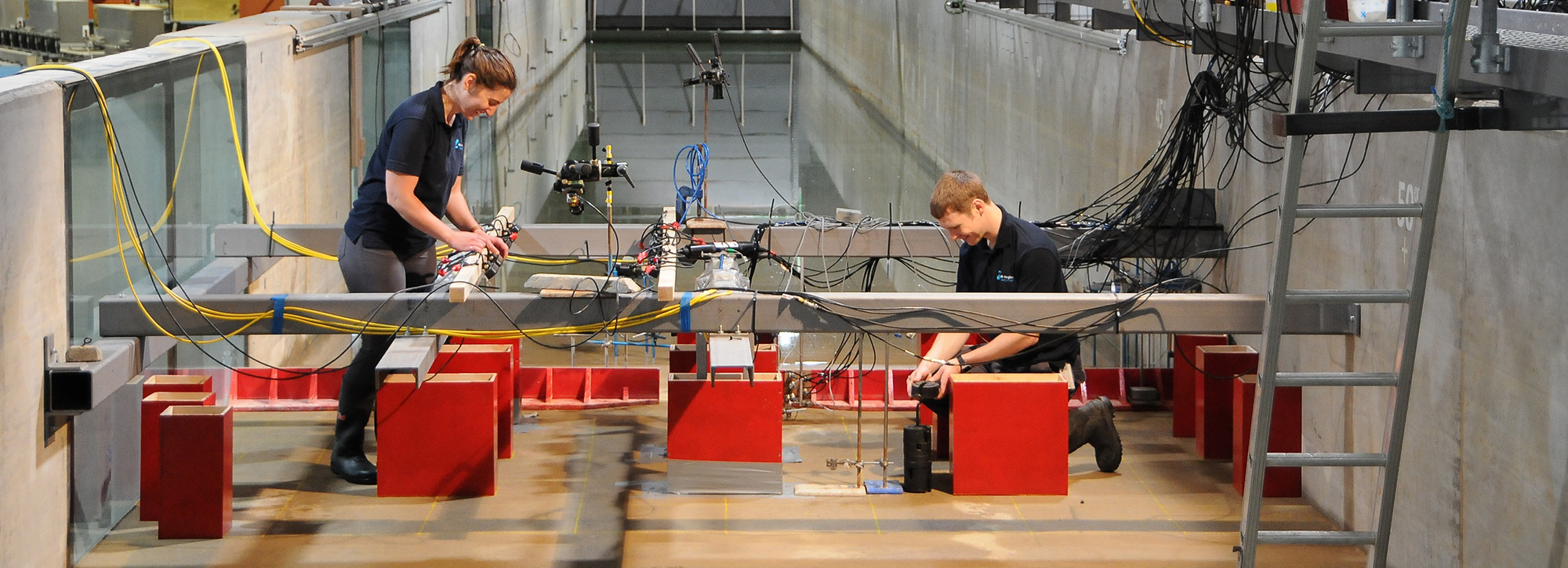
Tsunami simulator
Modelling tsunami waves correctly is essential in trying to save lives when faced with these hazards. Since 2004, five major tsunamis have devastated coastlines around the world, killing around 300,000 people. Yet relatively little is known about the giant waves created by seismic movements. How do they come ashore? How do they affect coast defences? What's the best way to protect coastal communities against them?
To help answer some of these questions, we developed the largest specialist tsunami simulator in Europe to create various types of these destructive waves.
Installed in a 75 m long and 4 m wide channel in our Fast Flow Facility, our tsunami simulator uses 70,000 litres of water to simulate a tsunami. At a scale of 1:50, it generates both crest-led and trough-led tsunamis, and enables, for the first time, the simulation of full tsunami impact on urban areas, through modelling in detail the effects that tsunamis have on coast defences, and how water is channelled around clusters of buildings. This provides the most accurate testing of the forces acting on buildings.
The tsunami simulator can also be used to evaluate whether flood defences are effective against tsunamis, or might amplify their destructiveness by allowing flood waters to build up in front of defences and then, when they fail, suddenly inundate areas behind, causing more devastation to areas previously thought to be safe.
The unique feature of our latest tsunami simulator is that it makes it possible to generate the full duration of a tsunami wave, for instance with a 20 minute wave duration scaled to almost three minutes in the laboratory.
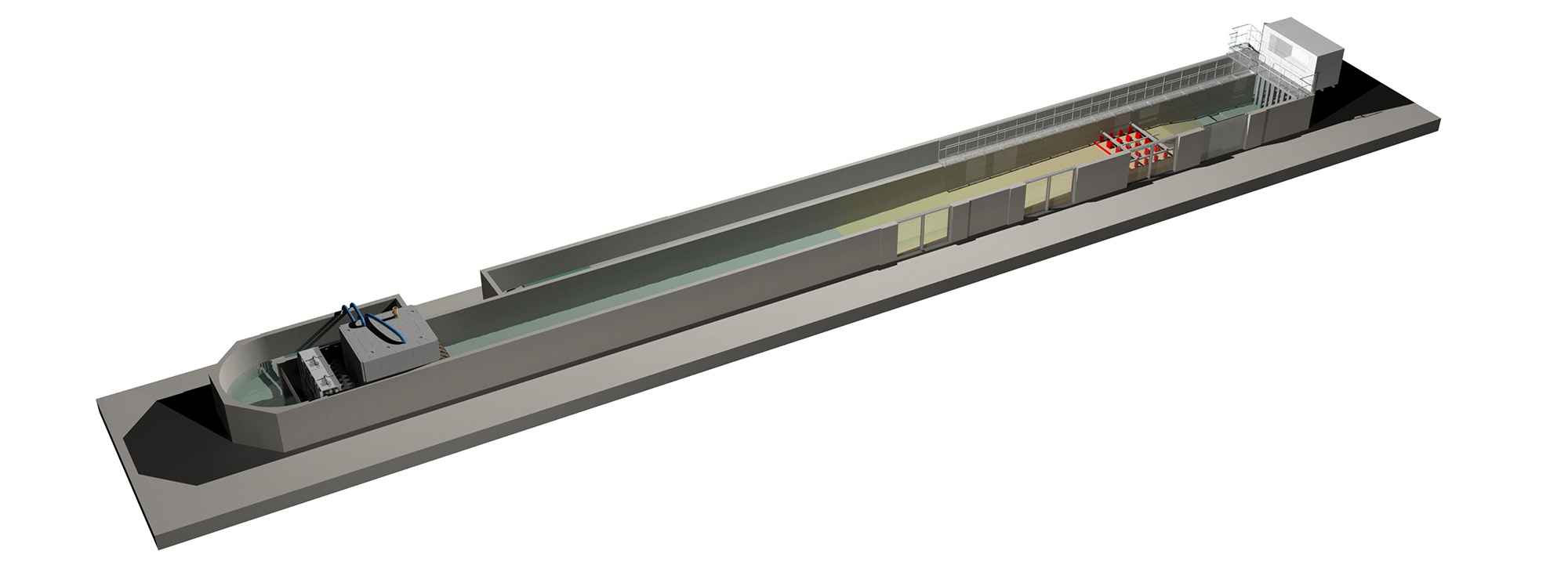
How does it work?
The tsunami simulator works by lifting a body of water using a pneumatic pump and a vacuum tank. The tsunami is created in four stages:
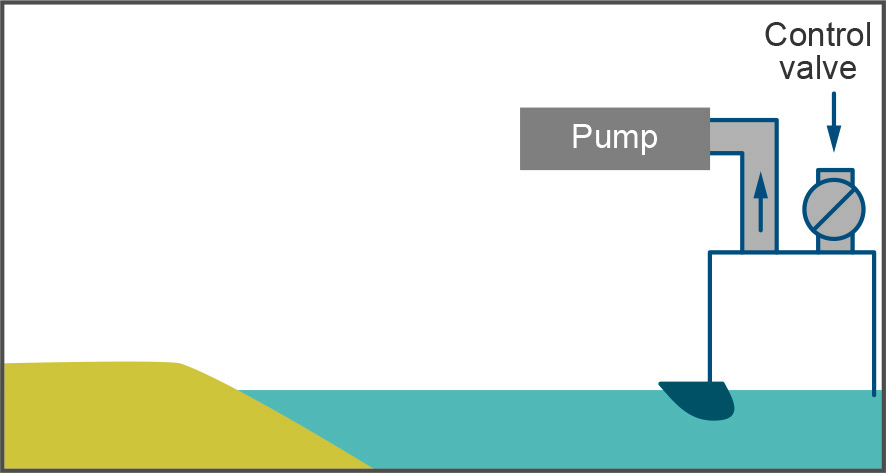
Stage One: With the bathymetry formed and the flume filled with water the test will start while the water is still.
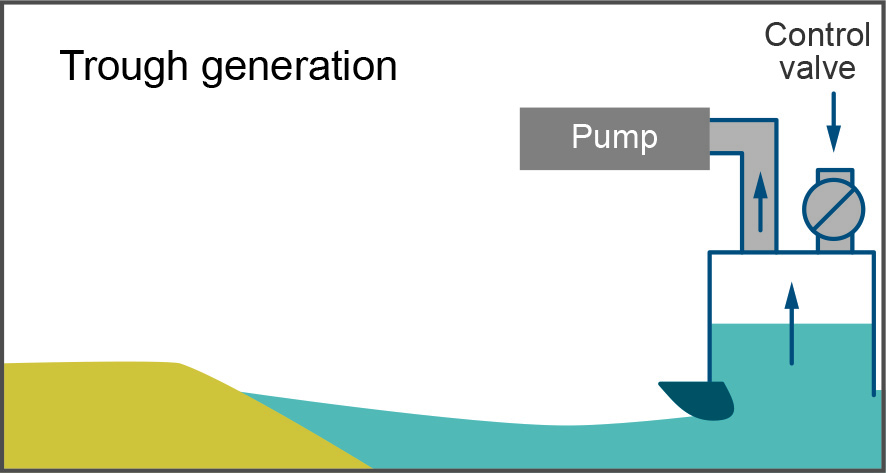
Stage Two: A high pressure air pump draws air out of the tank, reducing the pressure and drawing water from the flume up into the tsunami simulator. This simulates the retreat of a trough-led tsunami, when water at the coast initially rushes out to sea.
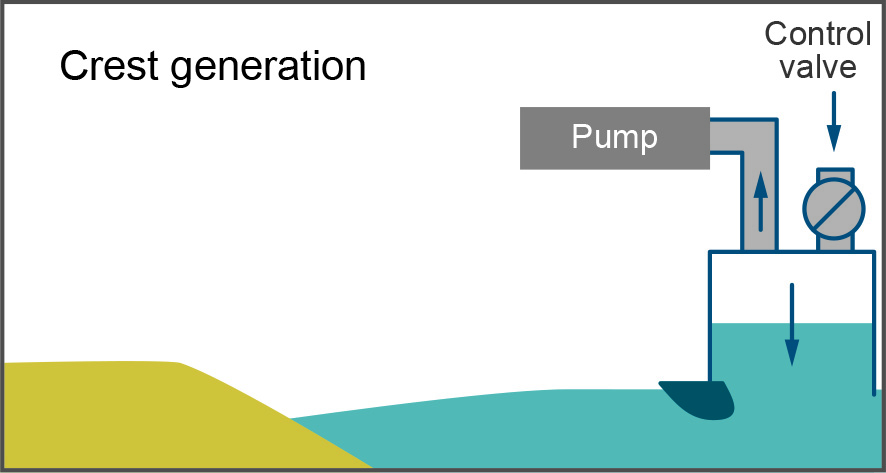
Stage Three: Once the retreating water reaches the desired level, the control system adjusts the air inlet valve so that the water inside the tank falls. This generates the crest of the tsunami that races towards the coast. The ‘flow shaper’ at the tank outlet helps water leave smoothly, allowing the control system to shape the wave to match a prototype profile.
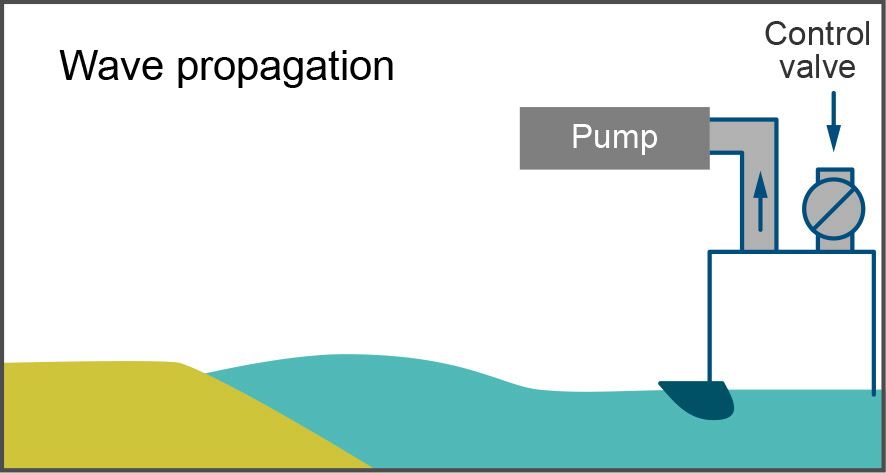
Stage Four: The wave propagates along the flume towards the test section. This could be run-up measurements, single buildings, coastal defences or multiple building arrays.
Want to know more?

